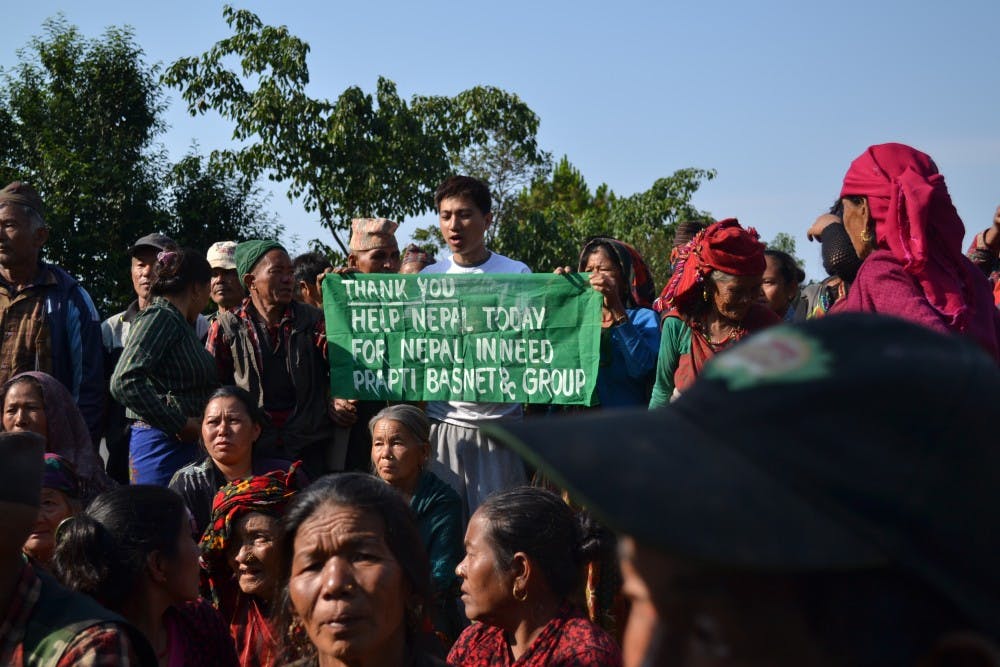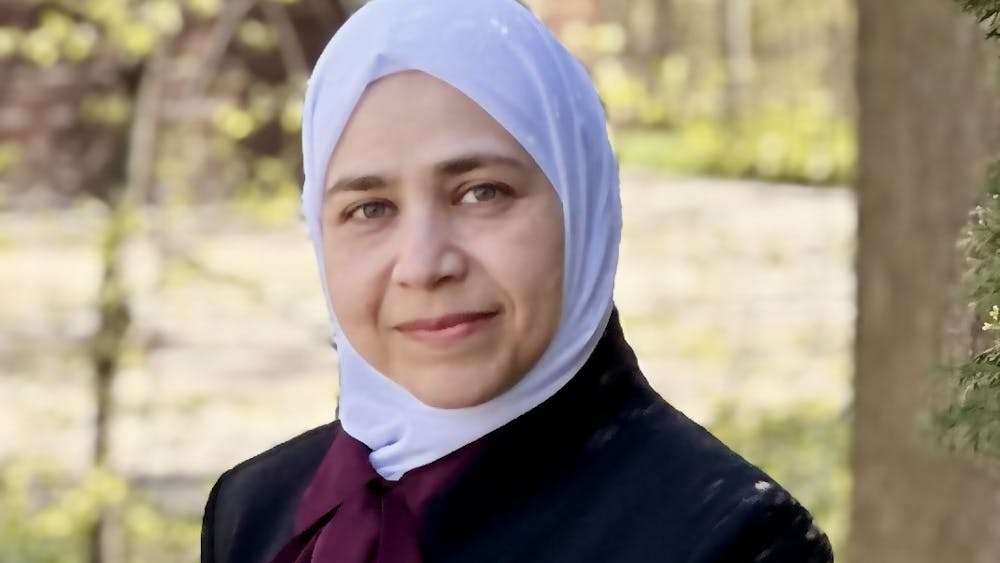CMU for Semjong: Nepalese student provides relief after earthquake
Graduate student returns to provide relief for his home village

On April 25, an earthquake with a magnitude of 7.8 on the Richter scale devastated Nepal.
This was the largest earthquake to strike the country since 1934. It left 9,000 dead and 23,000 injured, triggering a series of aftershocks that haunted Nepal and parts of India, China and Bangladesh for months afterward.
These were not just numbers to Central Michigan University graduate student Shanker Tamang.
Tamang grew up in Semjong village in the Dhading District of Nepal, a day's travel from Kathmandu. The second-year graduate student was studying molecular biology at CMU when he heard the news of devastation in his home country.
"It was really hard to communicate (with) Nepal and after two or three days I heard my whole village was totally destroyed, which had about 120 houses," Tamang said. "I thought 'Okay, I need to do something.'"
Political science faculty Prakash Adhikari, who grew up in the Taplejung district, was also concerned for his family.
"It was painful to see people suffer in Nepal," Adhikari said. "We were suffering here watching them suffer there."
The day after the news broke, Adhikari called a meeting of Nepalese students to find a way to provide aid for their home country.
"Every time there is a catastrophe, people are sympathetic and want to help," Adhikari said. "But we don't know if our help would reach those who need it. What do you do when you're not medical personnel or a trained rescue worker and could end up being a burden by drinking local water and eating local food that others need?"
The following day, Tamang emailed Adhikari and told him that his village had been wiped out. The two immediately set off raising funds for his village, having found a clear goal to help.
"If we sent money to the government, it would be a drop in the ocean," Adhikari said. "But we could send it to a specific location to help. We decided to send our donations to Semjong in the Dhading District."
While Tamang began a GoFundMe campaign, Adhikari, adviser to the registered student organization Amnesty International CMU, began raising funds locally.
Adhikari described the response of the CMU community as "overwhelming" and was offered financial and emotional support by his colleagues both here and at the University of New Mexico, his previous position.
Tamang rallied for support within the CMU community. He began an online campaign on April 26, raising nearly $5,000 in one week, and $8,000 by the time he was on a flight to Nepal on May 4.
Due to the circumstances, he and Adhikari were leery of handing $8,000 U.S. dollars (529,219.6 Rupee) over to a local or member of government and hoping that it would be spent properly.
"If no one could do it, then I would go myself," Tamang said.
Contact with those in his home village was limited due to the destruction, Tamang said, but what he heard worried him. After arriving in Kathmandu from Quatar, his fears multiplied.
"I couldn't focus on what I was going to do," Tamang said. "I could see the trauma, frustration, pain everywhere."
Shanker stayed with his father, Pancha Tamang, while formulating a plan to relieve his village.
Locals seldom slept or spent much time inside their homes, Tamang said, for fear that the building would collapse under one of the daily tremors. The tension of daily aftershocks created a stressful and exhausting environment for the Nepalese.
"If I just banged the table with my fist, everyone would run outside their houses," Tamang said. "Once there was a truck driving and it hit a wire running across the road and it started shaking and everyone ran outside because they thought they heard another earthquake. It was that bad."
He and local volunteers, many of whom were childhood friends, packed 10 kg. of rice, 1 liter of cooking oil, 1 kg. of sugar, 10 packets of biscuits, 50 g. of tea and 1 kg. of Masyaura (local vegetable) for 136 families living in Semjong. Additionally, each family was donated cash from the fund, 3000 rupee for every family and 6000 rupee for families with injured or deceased relatives.
The night he and the volunteers arrived at Semjong to distribute the provisions -- Tamang's first time home in six years -- they received a hero's welcome from family and friends.
"They killed a goat to feed us," Tamang said, in awe of the optimism of his people in the light of disaster.
After a night of celebrating, Tamang went to sleep confident that the situation was not as bad as he had feared.
Then the morning light came, and illuminated the full extent of the damage. Tamang was heartbroken.
"Nothing was there," Tamang said. "How can they welcome us so warmly when they have nothing? It was hard to see them in that (much) pain and still smiling."
Tamang and the others stayed with the people of Semjong for another night. During the night, a storm came through and washed away the shelter the village had erected.
He knew his work was far from done.
"The thing they need most is a temporary shelter with a steel rooftop," he said.
Tamang and the other volunteers then travelled back to Kathmandu to purchase sturdy roofing.
When back in Kathmandu to search for roofing supplies on May 12, an aftershock with the magnitude of 7.4 shook Nepal.
"I was in the earthquake by myself," Tamang said. "It was really terrifying. The walls were moving and you feel like you're in a swing. The buildings are shaking like trees and I was between three very tall buildings and a big wall at that time so there was no escape. There were a hundred people outside squeezed in that area."
Tamang, shaken but determined, continued his quest to find a roof for his people. Through the help of a friend and local entrepreneur, Kiran Khadka, and nonprofit organization Help Nepal Today, he was able to purchase and install the materials in his village.
Tamang found help in Jenny Huynh, a senior pre-med student at CMU who was in Nepal volunteering for the Children's Hospital for Eye Ear and Rehabilitation Services (CHEERS) at the time.
Huynh heard about Tamang through her friends in Nepal, and spent two days helping him deliver the tin roofing to his village.
"It's very difficult to explain the experience I had because I found it really surprisingly different for me," she said. "It was shocking, heartbreaking but warming as well because people do whatever they can to help their neighbors instead of complaining. They work to overcome it instead."
Immediately after returning from Nepal on June 1, Tamang began requesting funding for the rebuilding of schools in the area. His next goal is to maintain education in Nepal to ensure that other Nepalese will have the opportunity to study at the collegiate level.
"If one Shanker can come back and help his people, what could ten or a hundred do for their village?" Tamang said.
Tamang first arrived in the U.S. in January 2009 to study molecular biology at the University of Wyoming. He insists that his next relief endeavor be geared towards education in his home area. Tamang is currently seeking the resources to rebuild, staff and supply schools in his area.
Tamang encourages CMU students to donate and volunteer for Nepal through the Facebook page "Help Semjong Village Survive."




